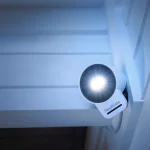‘s come up with a simple solution to make sure that the small legion of virtual reality headsets hitting the market actually work properly when they find their way into your hs. The company recently announced a new program called rks with Cardboard that guarantees a new Cardboard VR headset will play nice with virtual reality apps designed for the platform.
“At its core, the program enables any Cardboard viewer to work well with any Cardboard app. And the result is more awesome VR for all of us,” said in a blog post.
y this matters: en first introduced Cardboard at I/O 2014 it seemed like a prank; a lame answer to the fast-growing world of high-tech virtual reality headsets from Oculus VR, Samsung, Sony, Valve, possibly Microsoft. But the idea of slapping together a DIY VR headset using your phone some inexpensive materials turned out to have a larger appeal than many anticipated. Now what was once a joke appears to be slowly turning into a real, yet still lighthearted, VR effort from .
Tools guidelines
The most important tool is rolling out under the rks with Cardboard banner allows headset makers to ensure new hardware works with Cardboard apps. l the device maker has to do is define the hardware’s focal length, input type, the distance between the two lenses. Then, creates a QR code for the goggles that gets slapped on the side of the device.
l you, as the user, have to do is scan that QR code with the Cardboard app your phone will automatically tailor VR Android apps for your new goggles.
also issued design guidelines to help software developers improve their Cardboard apps, it released an update to the Cardboard SDK for Android the Unity gaming engine.
Beyond those major updates to Cardboard, is also beefing up the audio experience for its VR platform. said the Thrive Audio from the School of Engineering in Trinity College Dublin will help the company create immersive audio experiences for Cardboard VR. also acquired a start-up called Start Brush that specializes in 3D painting to improve how VR apps look.

















